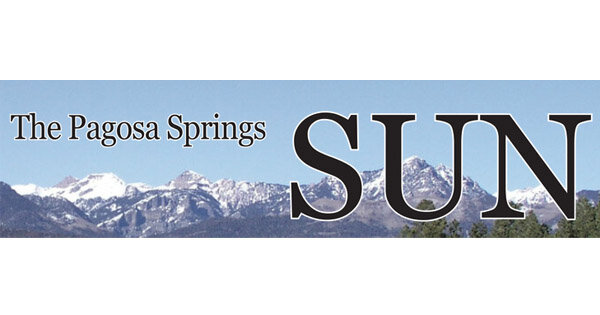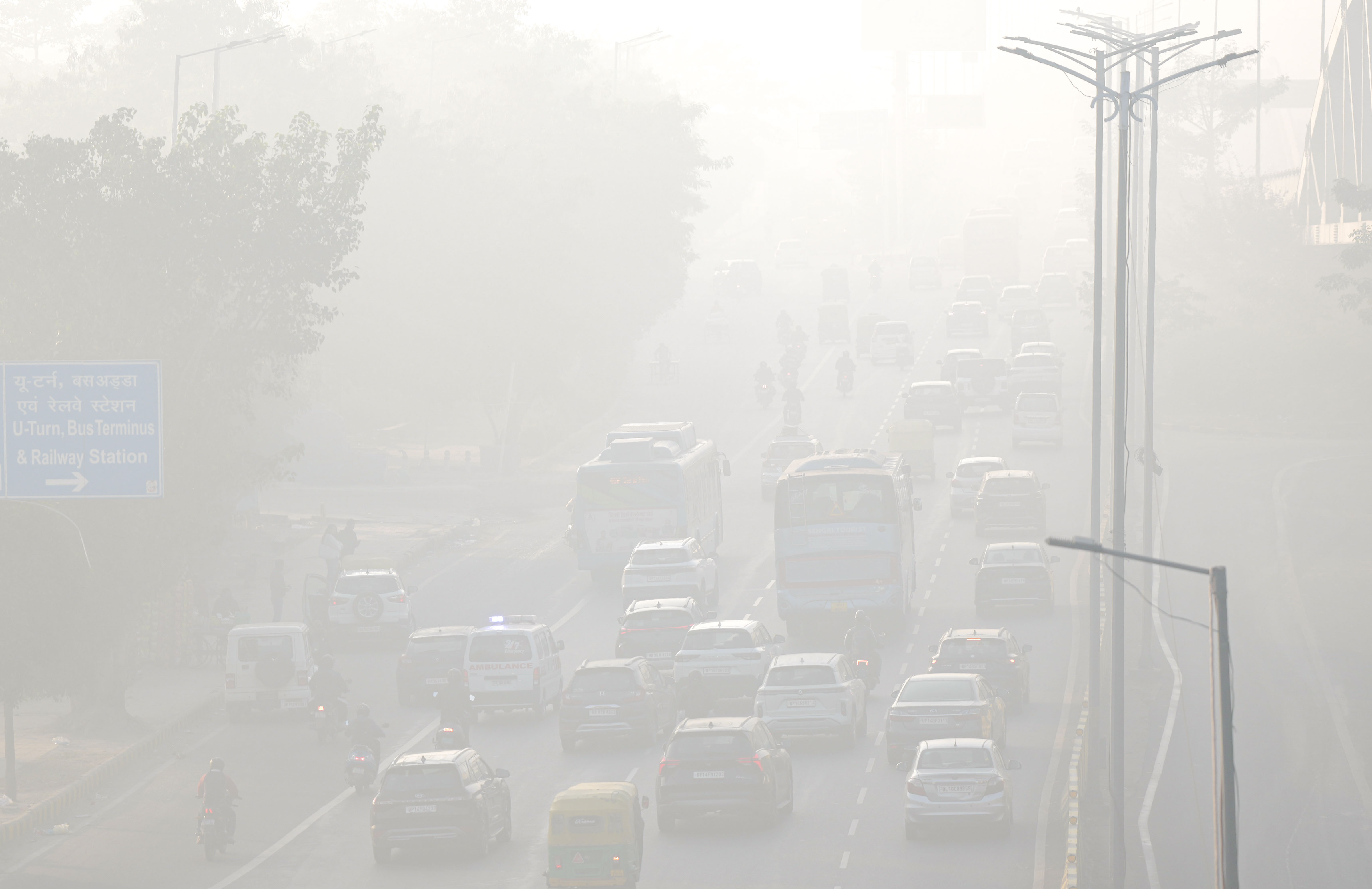Town planning commission conditionally approves Pagosa West sketch subdivision application – The Pagosa Springs Sun

Report on the Pagosa West Multi-Use Development Proposal
Introduction and Executive Summary
On October 28, the Pagosa Springs Planning Commission granted conditional approval for a sketch subdivision application for the “Pagosa West” development. This proposed 100-acre multi-use project is situated within town limits and aims to address several key community needs, aligning with multiple United Nations Sustainable Development Goals (SDGs), particularly those focused on sustainable communities, economic growth, and resilient infrastructure. However, the approval is contingent upon a legal review and addresses significant public concerns regarding environmental and procedural integrity.
Project Scope and Alignment with Sustainable Development Goals
Fostering Sustainable Cities and Communities (SDG 11)
The Pagosa West proposal is designed as a mixed-use development, a core principle of sustainable urban planning. By integrating residential and commercial spaces, the project seeks to create an inclusive, safe, and resilient community.
- Workforce Housing: A central component is an 88-unit multifamily apartment complex, “Pagosa Peaks Apartments,” targeting the “missing middle” income bracket. This directly supports SDG 11.1, which aims to ensure access for all to adequate, safe, and affordable housing.
- Public Infrastructure and Green Space: The plan includes the development of trails and open spaces, contributing to public access to safe and inclusive green areas (SDG 11.7).
- Sustainable Transport: A proposed multi-modal transit stop supports SDG 11.2 by providing access to sustainable transport systems for all.
Promoting Economic Growth and Resilient Infrastructure (SDG 8 & SDG 9)
The development is positioned to stimulate local economic activity and enhance community infrastructure, reflecting the ambitions of SDG 8 (Decent Work and Economic Growth) and SDG 9 (Industry, Innovation, and Infrastructure).
- Infrastructure Investment: The project is supported by a $1,989,000 Colorado Department of Local Affairs (DOLA) grant for public infrastructure associated with the workforce housing component.
- Enhanced Connectivity: Plans include upgrades to the Pinon Causeway intersection and the creation of a new interior road, “Pagosa West Boulevard,” which aligns with the town’s goal to create off-highway local road networks, building resilient infrastructure as per SDG 9.1.
- Mixed-Use Commercial Zoning: The parcel encompasses Mixed-Use Residential (MU-R), Mixed-Use Corridor (MU-C), and Mixed-Use Town-Center (MU-TC) zoning districts, allowing for a blend of commercial activities that can foster sustained and inclusive economic growth.
Procedural Review and Institutional Governance (SDG 16)
Conditional Approval by Planning Commission
The Planning Commission approved the sketch subdivision application unanimously, subject to 18 conditions. The decision-making process highlighted a commitment to transparent and accountable institutions, a cornerstone of SDG 16 (Peace, Justice, and Strong Institutions).
- Legal Review: A key condition, added during the meeting, requires the town’s attorney to review the legality of the application’s “statement of authority,” as the applicant was not the landowner at the time of submission. If the process is found to be invalid, the approval will be voided.
- Staff Conditions: The initial 17 conditions include requirements for a drainage plan, adherence to Pagosa Area Water and Sanitation District (PAWSD) standards, and a detailed phasing plan for the development, to be addressed in the preliminary plan review phase.
Public Engagement and Environmental Considerations
Community Concerns and Environmental Stewardship (SDG 15)
Public comment, primarily from residents of the adjacent Vista San Juan neighborhood, raised critical concerns related to environmental protection and community character. These concerns directly address SDG 15 (Life on Land), which calls for the protection of terrestrial ecosystems.
- Protection of Natural Habitats: Residents expressed a strong desire to protect old-growth trees and wildlife corridors within the proposed development area.
- Preservation of Rural Character: Opposition was voiced against development that could compromise the rural charm and aesthetic of the area.
- Future Development Oversight: Concerns over specific commercial uses, such as a gas station, were noted. Town staff clarified that such proposals would require a separate conditional use permit process, ensuring further public review.
Conclusion
The conditional approval of the Pagosa West sketch subdivision marks a preliminary step in a comprehensive development process. The project presents a significant opportunity to advance local objectives for housing and infrastructure, aligning with global Sustainable Development Goals. However, its final realization is dependent on a satisfactory legal review and the subsequent ability of the developers to address the substantive environmental and community concerns raised by the public in the next phases of planning.
Analysis of Sustainable Development Goals in the Article
Which SDGs are addressed or connected to the issues highlighted in the article?
SDG 11: Sustainable Cities and Communities
- The article focuses on a proposed multiuse development called “Pagosa West” within the municipal limits of Pagosa Springs. This directly relates to urban planning, housing, infrastructure, and land use, which are central themes of SDG 11. The project includes plans for residential housing, commercial spaces, public infrastructure, and open spaces, all of which are key components of creating sustainable communities.
SDG 15: Life on Land
- This goal is addressed through the concerns raised by the public during the planning meeting. Residents of the nearby Vista San Juan neighborhood expressed opposition based on a desire to “protect old-growth trees and wildlife.” This highlights the conflict between urban development and the preservation of terrestrial ecosystems and biodiversity, a core issue of SDG 15.
SDG 16: Peace, Justice and Strong Institutions
- The article extensively details the procedural and legal debate surrounding the development application. The public’s questioning of the application’s legality, the planning commission’s debate, and the decision to add a condition for a legal review by the town’s attorney all point to the importance of transparent, accountable, and inclusive institutions. This reflects the principles of SDG 16, which advocates for effective governance and participatory decision-making.
What specific targets under those SDGs can be identified based on the article’s content?
SDG 11: Sustainable Cities and Communities
- Target 11.1: By 2030, ensure access for all to adequate, safe and affordable housing. The article explicitly mentions that a concrete part of the development is an “88-unit multifamily apartment complex that would be geared toward workforce housing for those in the so-called ‘missing middle’ income brackets.” This directly addresses the need for affordable housing for the local workforce.
- Target 11.2: By 2030, provide access to safe, affordable, accessible and sustainable transport systems for all. The development proposal includes public improvements such as a “multi-modal transit stop” and connections to the “Town-to-Lakes nonmotorized trail system,” which align with the goal of improving sustainable transportation options.
- Target 11.3: By 2030, enhance inclusive and sustainable urbanization and capacity for participatory, integrated and sustainable human settlement planning. The entire narrative of the planning commission meeting, including public comment, debate among commissioners, and adherence to the town’s Land Use and Development Code (LUDC), is a direct example of a participatory planning process in action.
- Target 11.7: By 2030, provide universal access to safe, inclusive and accessible, green and public spaces. The developers propose “trail development and open space” as part of the public improvements for the community, which directly supports this target.
SDG 15: Life on Land
- Target 15.5: Take urgent and significant action to reduce the degradation of natural habitats and halt the loss of biodiversity. The concerns of residents about “protecting old-growth trees and wildlife” directly invoke this target, as they are advocating for the preservation of natural habitats within the development area.
- Target 15.9: By 2020, integrate ecosystem and biodiversity values into national and local planning and development processes. The public opposition raising environmental concerns during the planning commission’s review process is an attempt to ensure that ecosystem values are integrated into the local development decision.
SDG 16: Peace, Justice and Strong Institutions
- Target 16.6: Develop effective, accountable and transparent institutions at all levels. The planning commission’s decision to add a condition requiring the “town’s attorney review the legality of the application” in response to public concerns demonstrates an effort to ensure the institution is acting accountably and its decisions are legally sound and transparent.
- Target 16.7: Ensure responsive, inclusive, participatory and representative decision-making at all levels. The article highlights the role of public comment, where resident Rachel Suh raised a significant legal question. The commission’s subsequent discussion and action to add a condition for legal review show a responsive decision-making process that is inclusive of public participation.
Are there any indicators mentioned or implied in the article that can be used to measure progress towards the identified targets?
SDG 11: Sustainable Cities and Communities
- Implied Indicator for Target 11.1: The number of new affordable housing units created. The article specifies “an 88-unit multifamily apartment complex” for workforce housing, providing a clear quantitative measure.
- Implied Indicator for Target 11.2: The development of sustainable transport infrastructure. Progress could be measured by the construction of the “multi-modal transit stop” and the length of the new “nonmotorized trail system” that is developed.
- Implied Indicator for Target 11.7: The amount of new public green space. This can be measured by the total acreage of “trail development and open space” included in the final approved plan.
SDG 15: Life on Land
- Implied Indicator for Target 15.5: The preservation of existing natural features. Progress could be measured by the number of “old-growth trees” that are protected in the final development plan or an assessment of the impact on local “wildlife” habitats.
SDG 16: Peace, Justice and Strong Institutions
- Implied Indicator for Target 16.7: The level of public participation and institutional responsiveness. This can be measured by the fact that a key condition of approval (the legal review) was added directly as a result of public comment, demonstrating that the participatory process had a tangible impact on the decision.
Summary of SDGs, Targets, and Indicators
| SDGs | Targets | Indicators (Mentioned or Implied in the Article) |
|---|---|---|
| SDG 11: Sustainable Cities and Communities | 11.1: Ensure access to adequate, safe and affordable housing. | The number of new workforce housing units (specifically, 88 units). |
| 11.2: Provide access to sustainable transport systems. | Creation of a multi-modal transit stop and a nonmotorized trail system. | |
| 11.3: Enhance inclusive and sustainable urbanization and planning. | Existence of a public planning process where citizen input is considered. | |
| 11.7: Provide universal access to green and public spaces. | Area designated for “trail development and open space.” | |
| SDG 15: Life on Land | 15.5: Reduce the degradation of natural habitats. | Measures taken to protect “old-growth trees and wildlife.” |
| 15.9: Integrate ecosystem values into local planning. | Inclusion of environmental concerns raised by the public in the planning review. | |
| SDG 16: Peace, Justice and Strong Institutions | 16.6: Develop effective, accountable and transparent institutions. | The use of a formal legal review to ensure the validity of the commission’s decision. |
| 16.7: Ensure responsive, inclusive, and participatory decision-making. | The addition of an approval condition based directly on public comment. |
Source: pagosasun.com
What is Your Reaction?
 Like
0
Like
0
 Dislike
0
Dislike
0
 Love
0
Love
0
 Funny
0
Funny
0
 Angry
0
Angry
0
 Sad
0
Sad
0
 Wow
0
Wow
0














































.jpg.webp?itok=0ZsAnae9#)







:focal(1500,1000)/https://media.globalcitizen.org/a6/9a/a69a4720-d8a1-4715-b596-18738d03c05c/rotary_polio_hero_image.jpg?#)

/countries/sri-lanka/photo-credit---dmc-sri-lanka.tmb-1200v.jpg?sfvrsn=dc298bcc_1#)



















